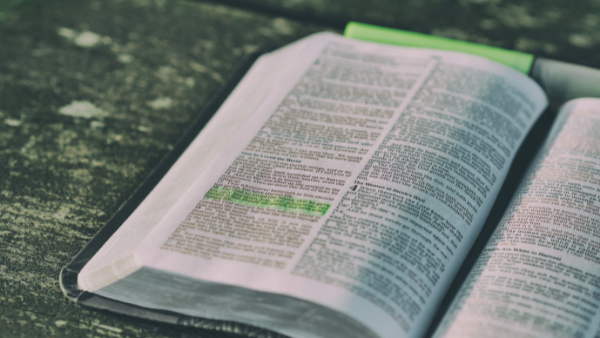By Dr. Ben Stubblefield
Visiting assistant professor of Christian Studies, University of Mobile
IT IS FINISHED!
John 19:17–30
Raised (17–22)
At verse 17, Jesus, though in possession of ultimate authority, comes under the authority of the Roman state and is forced to carry His own cross. Like Isaac to the mount of sacrifice, Jesus is bearing the instrument of His own death.
John recalls that Jesus was crucified between two criminals who were likely there for the same cause as Barabbas. They were insurrectionists or, in Rome’s eyes, domestic terrorists. It’s difficult to miss the irony — that Christ the righteous perishes unjustly for and between the unrighteous who perish justly (Luke 23:41).
Yet there He hangs, suffering a death that D.A. Carson says “was so brutal that no Roman citizen could be crucified with the sanction of the emperor.”
But this was done under the false charges of sedition (18:33) because of the jealousy of the Sanhedrin (Mark 15:10) and the political calculations of the Roman state (Mark 15:15). If ever there was a violation of dignity, law and order, this was it.
Interestingly, the Lord hangs there with a trilingual proclamation attached to the cross, describing the cause of His death: “Jesus of Nazareth, King of the Jews,” in Aramaic, Greek and Latin. All who would pass by would read what they thought was an accusation of His criminality, but it served unwittingly as a prophetic declaration of the truth — that even from this instrument of torture, the True King was bringing about an age of His glory and reign.
Planned (23–24)
The soldiers now divide Jesus’ final earthly possessions but cast lots for the tunic. Presumably, they want to walk away with an intact fabric, but they are, though unaware, fulfilling the prophetic plan of God for the Messiah from Psalm 22:18.
The scene, moreover, speaks to the humiliation of Christ. He once laid aside His garments in John 13 in order to wash His disciples’ feet — a sacred act of sacrifice, servanthood and love — and He does it again here.
Honored (25–27)
Amazingly, Jesus shows steady-mindedness through His agony to take care of His mother. He commends the “disciple whom Jesus loved” to take Mary on and care for her. It’s an event that stands out as emblematic of Jesus’ meticulous concern for His own.
Moreover, the devotion of the four women stands in stark contrast to the barbarism of the soldiers. It’s not hard to imagine the unfolding emotional saga and its extremes: indifference, callousness and death compared to loyalty, devotion and love.
Finished (28–30)
Moving deliberately now toward the end of His suffering, Jesus asks for something to drink. What happens will forge a link to the anguish of the psalmist in Psalm 69, but it’s also highly likely that John intends for us to connect the sprinkling of the blood of the Passover lamb by a hyssop branch with the crucifixion event of the Lamb of God — the final Passover Lamb (Ex. 12:22).
As the hyssop branch signaled sacrifice and peace for all those covered by the blood of the lamb in the ministry of Moses, so the hyssop branch once again signals sacrifice and peace under the ministry of Jesus.
After receiving the wine, He declares, “It is finished!” His ministry of suffering is over and the agony of death is done. In dying, He brings death to death; shamed, He receives all glory; defeated, He wins an eternal victory.



Share with others: